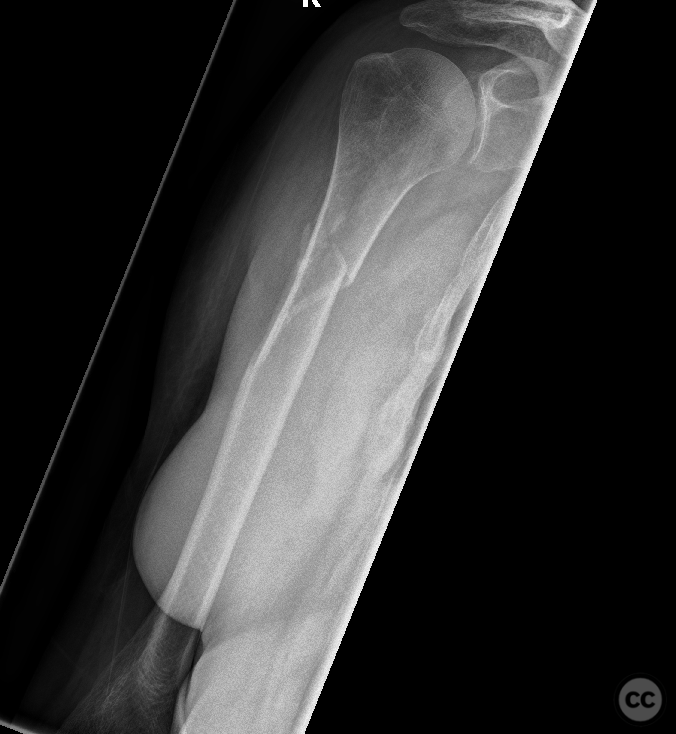Proximal 1/3 Dorr C humerus open reduction intramedullary nail
Score and Comment on this Case
Clinical Details
Clinical and radiological findings: Retrospect is always 20-20. This patient presented with a a minimally displaced spiral fracture of the proximal third humeral shaft full stop a closed and neurovascularly intact injury sustained in a low injury intoxicated fall. A likely good candidate for conservative management the patient however wished an osteosynthetic fixation. We chose to do intramedullary nailing in order to keep soft-tissue disruption and post-operative wound care to a minimum.
Preoperative Plan
Planning remarks:
Surgical Discussion
Operative remarks:Underappreciated in the preoperative planning is the humoral equivalent of a Door C femoral diaphysis - in other words stovepipe bone. Stove pipe diaphyseal bone allows for significant toggle of intramedullary fixation and does little to aid maintenance of reduction. This became evident intraoperatively so a mini open anatomic reduction of the spiral was performed before insertion of the nail to ensure correct proximal nail trajectory to help maintain reduction mid to long-term. Bone quality and the proximal humeral metaphysis and head was poor and although intraoperative fluoroscopy suggested acceptable maintenance of reduction loss of reduction is evident at post-operative follow-up along with osteolysis around the proximal nail and screws. The patient was minimally symptomatic of the nonunion and a revision was initially not desired. Subsequently the patient developed a seroma at at the fracture site which produced a local swelling in the proximal arm. Concerned for infectious non-union this aroma was open the braided and soft tissue samples from the fracture site were taken. The samples demonstrated no bacterial colonisation or indication of septic non-union. The patient presented some 6 months later again with soft tissue swelling and local fluctuance at the fracture site and was a game debrided full stop on this occasion all tissue samples demonstrated bacterial colonisation. A two-stage septic revision with planned plating has been initiated.
Search for Related Literature

Dr Ed Oates
- Germany , Schleswig Holstein
- Area of Specialty - General Trauma
- Position - Specialist Consultant

Industry Sponsership
contact us for advertising opportunities






Article viewed 476 times
14 Nov 2022
Add to Bookmarks
Full Citation
Cite this article:
Oates, E.J. (2022). Proximal 1/3 Dorr C humerus open reduction intramedullary nail. Journal of Orthopaedic Surgery and Traumatology. Case Report 41175332 Published Online Nov 14 2022.